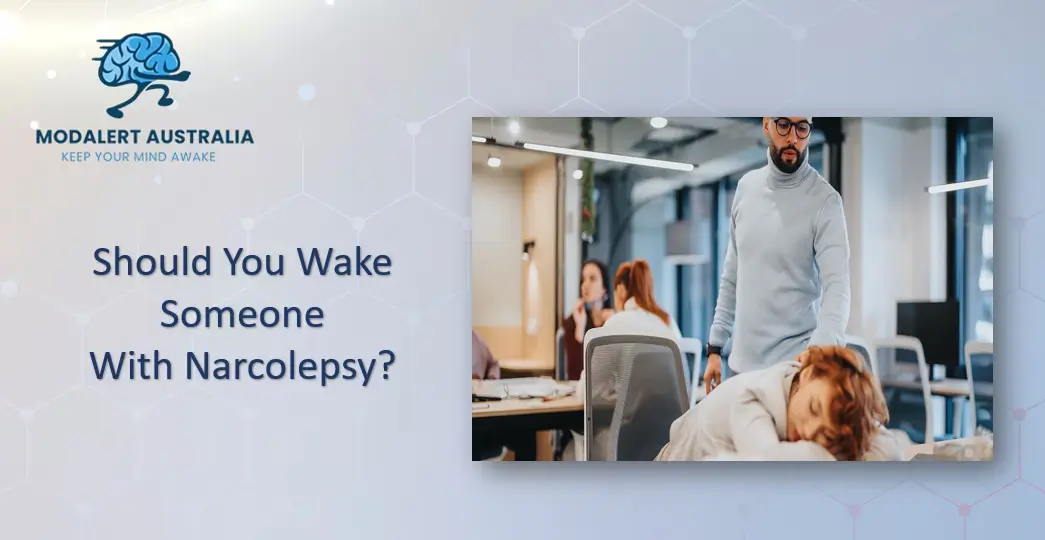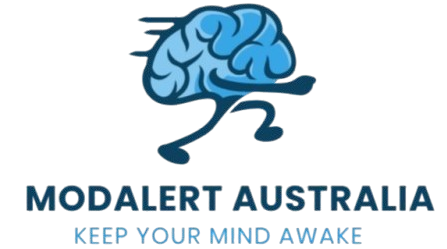Should You Wake Someone with Narcolepsy?

Narcolepsy is a long-lasting neurological condition that impacts the brain’s ability to regulate sleep-wake cycles. Patients with the disorder often suffer from an excessive amount of daytime sleepiness and sudden sleep disorders, as well as disrupted evening sleep. The most frequent question concerns: Should you wake someone with Narcolepsy?
In this article, we’ll look at the top techniques for dealing with narcolepsy attacks in which waking a person may be required, as well as the most commonly prescribed medications to treat this condition.
Understanding Narcolepsy and Sleep Attacks
The symptoms of Narcolepsy are:
Excessive Daytime Sleepiness (EDS): Consistent sleepiness despite adequate rest at night.
Cataplexy: The sudden weakness of the muscles caused by emotional stress (found within Narcolepsy Type 1).
Sleep Paralysis: A temporary inability to move or talk when awake or sleeping.
Hypnagogic/Hypnopompic Hallucinations: Dream-like, vivid experiences when falling asleep or getting up.
When experiencing a night attack, one suffering from Narcolepsy can fall asleep abruptly at times during some activity.
The Two Main Types of Narcolepsy
Narcolepsy can be classified into two types:
Type 1 (Narcolepsy with Cataplexy):
- It is characterized by sudden muscle weakness triggered by strong emotion (laughter or surprise).
- It is often associated with daytime sleepiness and disturbed sleep at night.
Type 2 (Narcolepsy without Cataplexy):
- This causes extreme fatigue in the daytime; however, there is no weakness in the muscles.
- There is a possibility of hallucinations and sleep paralysis, as well as sleep fragmentation.
These issues can impact the school or work environment and family relationships, making good management essential.
Step-by-Step: How to Wake Them Safely Without Causing Distress
- Stage 1: Use a soft voice, repeat their child’s name calmly, repeating it a couple of times.
- Stage 2: A gentle touch to the arm (not moving).
- Stage 3: If there is no response, give it 5 minutes before trying again.
- Stage 4: Provide water or a calm period to help refocus.
What to expect: Slow responses, confusion.
Should You Wake Someone with Narcolepsy?
The answer will depend on the circumstances:
When You SHOULD Wake Them:
If they’re in an Unsafe Environment – If someone has fallen asleep working, driving, or working with machinery, getting their body is vital to avoid injuries.
If They Have a Scheduled Commitment – important meetings, appointments, or other responsibilities could require an early waking.
If They Requested It – Certain people suffering from narcolepsy request relatives or friends to wake them up following brief naps to prevent prolonged sleeping.
When You Should NOT Wake Them (Unless Necessary):
During a Natural Sleep Cycle – If they’re safe in a location (like couches or beds), it is usually ideal to leave them sleeping only briefly (10-20 minutes).
If they’re in REM sleep, A sudden awakening can lead to confusion or sleep paralysis.
If They Experience Cataplexy – When a cataplexy event occurs (muscle weakness), the patient is usually conscious but is unable to move. It’s not necessary to wake them except when they’re in danger.
The Worst Ways to Wake Someone with Narcolepsy
- Shaking them or shouting at them (triggers fight or flight).
- Bright lights or blasting alarms (sensory oversaturation).
- Making fun of their circumstances or demeaning them (“Wake up and laze!”).
- The reason these strategies fail is that they damage confidence.
How to Wake Someone with Narcolepsy Safely
If you must wake someone with Narcolepsy, take these steps to reduce the anxiety:
Use a Gentle Approach
- Softly speak and repeat your name.
- Gently stroke their shoulder (avoid shaking the shoulders).
Allow Time to Transition
- Give them time to get used to the changes before expecting any response.
- Please do not rush through them, as this can lead to confusion.
Avoid Sudden Stimuli
- Bright lights, loud noises, and sudden movements may cause a rumble.
- If possible, allow them to wake up naturally if there isn’t any urgency.
What Happens If You Wake Someone with Narcolepsy?
A person suffering from Narcolepsy who wakes up may trigger different responses based on the following:
- The amount of sleep they get (light dozing vs. an attack of deep sleep).
- If they’re suffering from dreams or a sleep disorder, they’re likely to experience hallucinations.
- They have a personal sensitivity to disturbances.
Common Reactions Include:
- Disorientation – You may not be able to tell their location initially.
- Grogginess (Sleep Inertia) – You could take several minutes to wake fully.
- Emotional Responses – Many feel anxious, angry, or crying.
- Increased Sleep Attacks – A waking moment can cause a new incident.
Mistakes People Make When Trying to Help
- If they’re exaggerating or faking sleep.
- Breaking up naps can prevent insomnia attacks in the future.
- Do not believe the symptoms (“You have just had a nap, why do you feel?”).
- What causes these mindsets? They make tackling Narcolepsy harder.
Doctors’ Opinions on the Risks of Waking Narcoleptic Patients
- Neurologists’ warnings: Sudden wake-ups can worsen daytime sleepiness.
- Experts in sleep medicine advise that the event should be natural when possible.
- Exemptions for security reasons (driving or operating machines).
- Research on sleep inertia and its effects in the narcolepsy group vs. the regular sleeping.
Medications Used to Treat Narcolepsy
There isn’t a cure for the condition, but medication may help manage the symptoms. Common prescriptions are:
Stimulants (For Excessive Daytime Sleepiness)
Recommended products
-
Modalert 100 Mg (Modafinil)
$81.12 – $390.00 -
Modafresh 200 Mg (Modafinil)
$70.00 – $245.00 -
Modasmart 400 Mg (Modafinil)
$100.00 – $520.00
Modafinil (Provigil®) – Enhances alertness without the effects of highs and lows of stimulants like traditional ones.
Armodafinil (Nuvigil®) – Like modafinil, but more durable.
Methylphenidate (Ritalin®, Concerta®) – The most well-known stimulant to improve alertness.
Amphetamines (Adderall®, Dexedrine®) – In extreme cases, they are more prone to abuse.
Sodium Oxybate (For Cataplexy & Nighttime Sleep)
Xyrem® (GHB) – It helps to consolidate sleep during the night. It also decreases the cataplexy.
Xywav® (Low-sodium version of Xyrem) – Newer alternatives with lower sodium.
Antidepressants (For Cataplexy, Sleep Paralysis, Hallucinations)
Venlafaxine (Effexor XR®) – An SNRI that can help control cataplexy.
Fluoxetine (Prozac®) – An SSRI often prescribed to treat Narcolepsy-related symptoms.
Tricyclics (Clomipramine, Imipramine) – The older medications are less commonly used today.
Newer Treatments
Pitolisant (Wakix®) – A histamine-based substance that helps to increase awakening without the stimulant effect.
Solriamfetol (Sunosi®) – Increases dopamine/norepinephrine to improve alertness.
Handling Public Situations: Strangers, Work, and Social Settings
What do you do when someone in your workplace has Narcolepsy and gets snoozed in a group?
What can you explain about narcolepsy to strangers (e.g., in the public transportation system)?
Do teachers have to wake their students who suffer from Narcolepsy? The pros and cons.
Employment rights and legal protections regarding sleep disorders.
Long-Term Effects of Frequent Interrupted Sleep
Employment rights and legal protections regarding sleep disorders.
The impact of mood on the body is Irritability, anxiety, and depression due to constant interruptions.
Problems with focus and memory result from sleep deprivation.
What are the reasons why uninterrupted napping is sometimes medically needed?
Final Answer: A Simple Flowchart for Deciding
Question 1: Are they in immediate danger? Get them up.
Question 2: Have they asked to be awakened? It is best to wake them gently.
Question 3: Are they safe areas? Let them rest.
Question 4: Are you unsure? Do you have any doubts? Err in the direction of prudence.
Final Thoughts
Napping someone who has Narcolepsy needs to be treated with care and only when necessary. If they’re within a protected area and have a nap, taking a small break (10-20 minutes) will make them feel rejuvenated. In dangerous circumstances, gentle awakening is an appropriate choice.
Medicines play an essential role in the treatment of Narcolepsy. Therapies such as modafinil, Xyrem, and Wakix have dramatically improved the patients’ lives. If you or your relative suffers from the condition, getting in touch with a sleep expert is crucial for individualized medical treatment.








